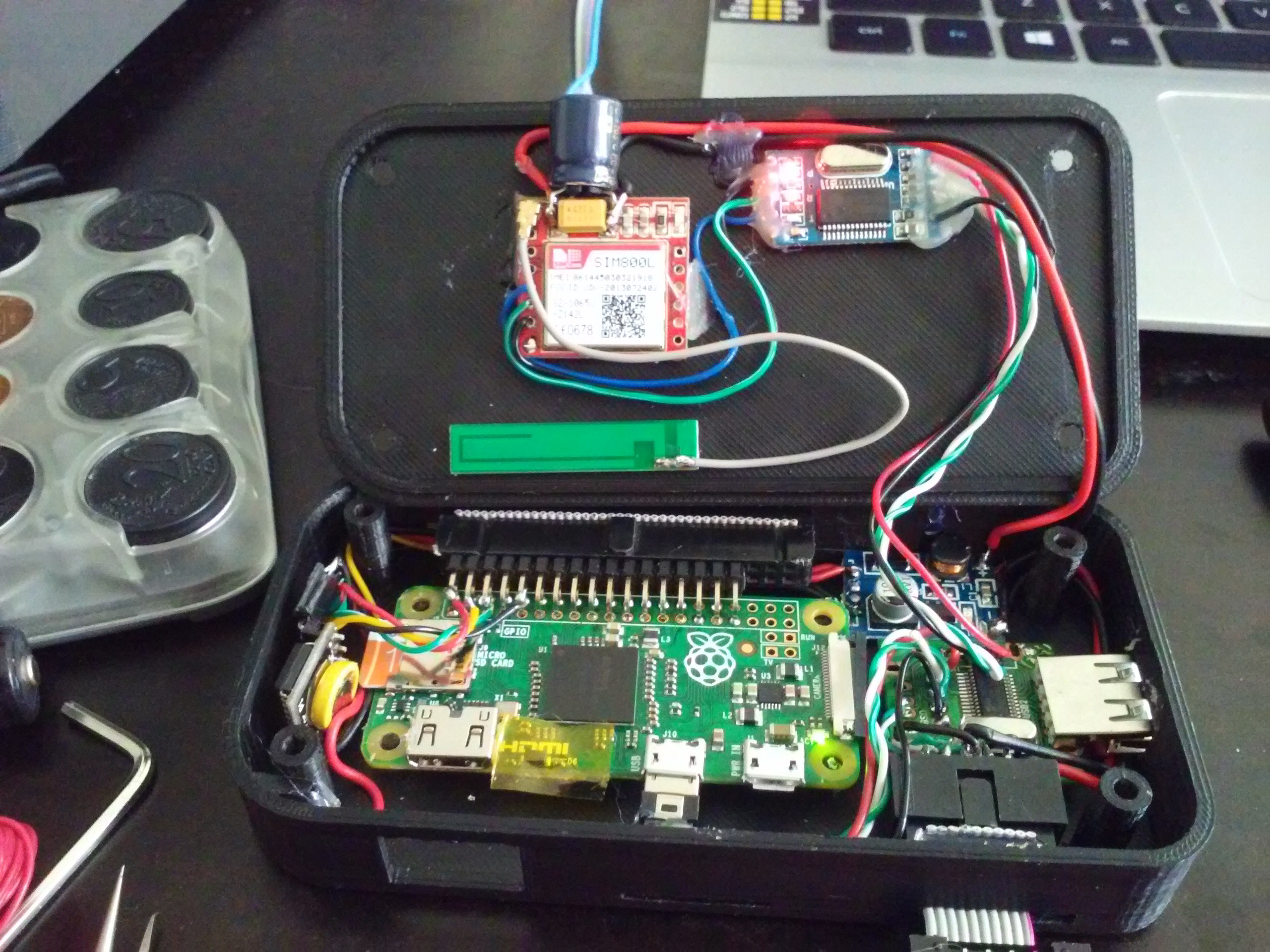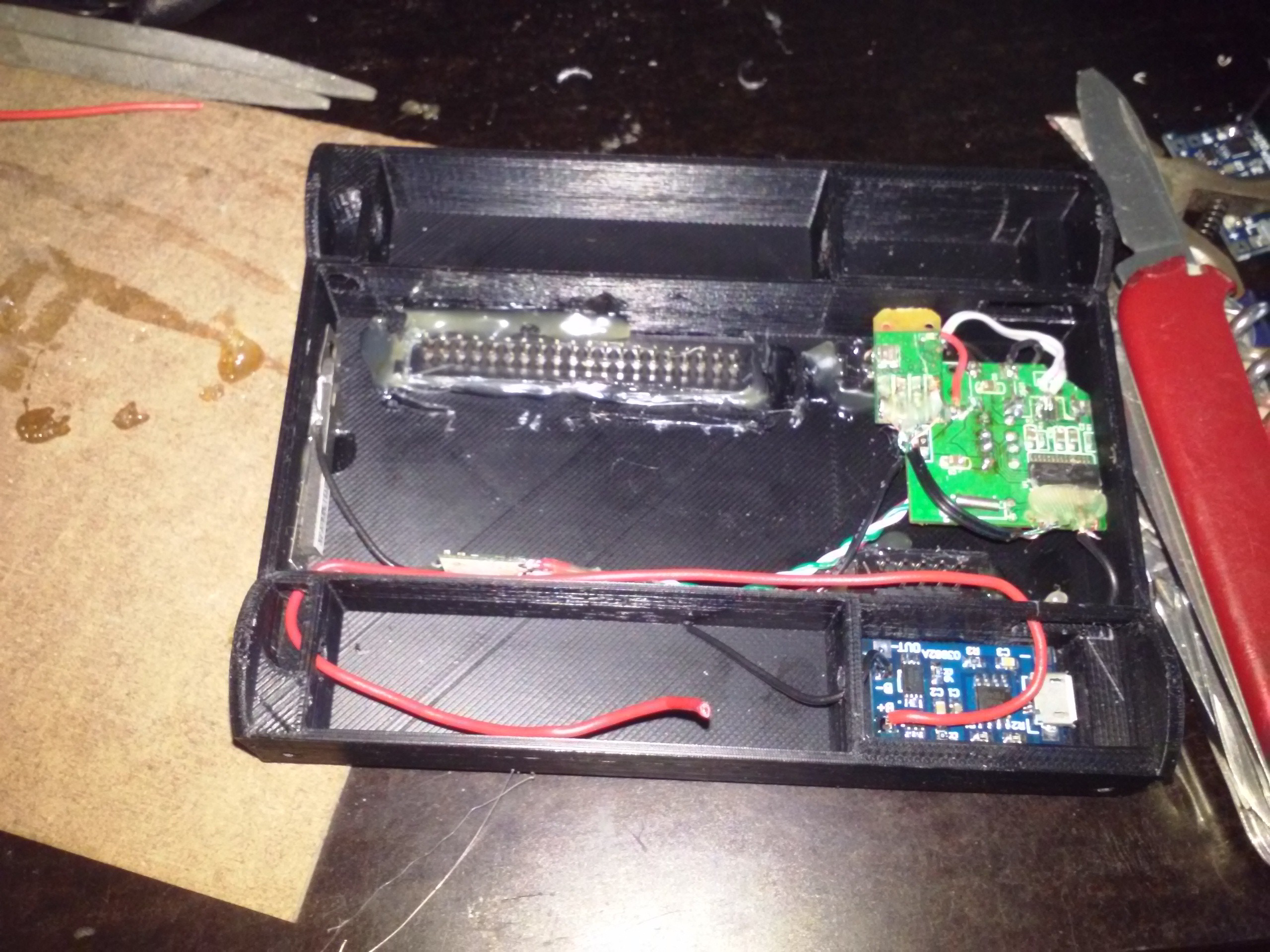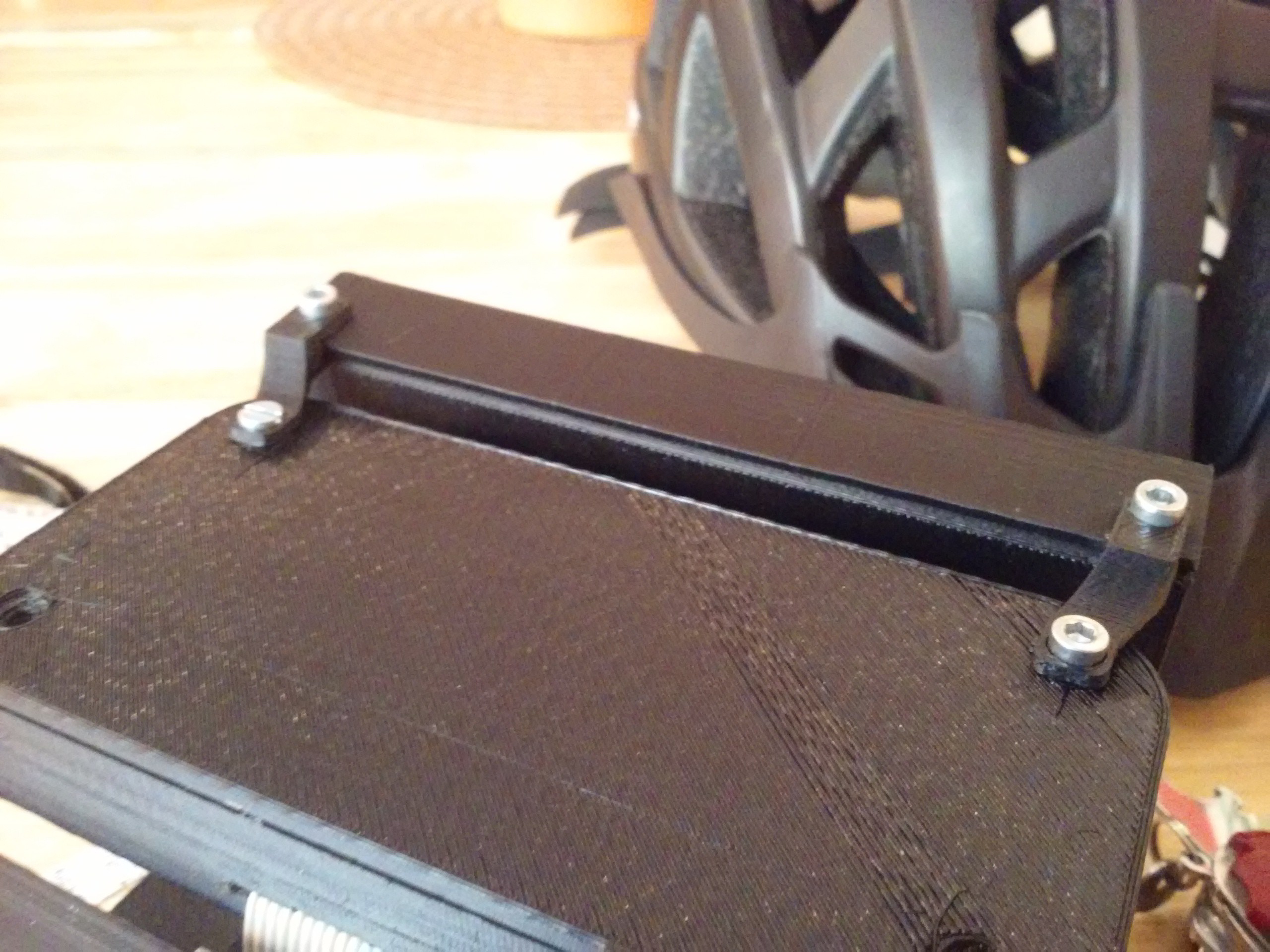This is an old log I forgot to post. Sorry guys ;-)
All the modules are finished, and the device is wearable. I'd be wearing it right now, but...

I forgot about batteries. I had quite different plans about the enclosure initially, and thus my battery holders were to be 4 aluminium cylinders with 18650s inside. Those cylinders are 25mm in diameter, which is not that great for the 3D-printed case I'm getting now. Thus, I'll re-make the communication module (throwing in a GPS module, as well). It'll be able to fit 2 18650 batteries, and I'll probably find a place for 2 more somewhere around the display module. I'll likely need to insert a small battery in the CPU module, just for the redundancy of some sorts so that I can swap modules quickly if necessary.
For example, I already have plans for a snap-on display module with a color TFT LCD working over SPI. I need to get some of those displays first, but the results should be good enough for GPS maps. Alternatively, I could make it snap on top of the CPU module, complementing the pyLCI controls.

This thing still needs a laptop when I want to develop things. Might be less of a problem than I think though. Also, I need some kind of an SSD holder - I want to include an SSD filled with music. I could make it wearable as well, but then it'd be a problem to take off the bracelet etc. If it proves to be a problem for the battery life I'll just hook it to my portable router or get a big flash drive.
I re-made the GPIO breakout & HAT module. Now it's much slimmer, oh, and has a thinner case =) The HAT feature is mising for now, though. I think I'll add it when I'll actually need it.
I also decided to finish the CPU module. What's inside?

- Pi Zero
- I2C RTC
- GSM module with USB-UART
- 5V DC-DC to provide power to the Pi separately
- USB hub connected to the Pi, with 2 ports going to the comms module, one going to the external USB port and one going to GSM module's USB-UART

There's really a lack of space in the CPU module because I want to add the sound card and a spare battery for redundant supply while I change batteries. I hope to solve this soon, maybe with smaller connectors and more tightly cramped things. As for now, it's full of boards and modules.

The new comms module received 2 18650 battery holders inside, complete with the charger circuits. I'm thinking of a circuit that'd connect and disconnect batteries to the main power line, according to their voltage. As for now, both batteries are constantly connected to 3.6V line from which the power goes to the other modules. Other than that, the module is basically the same as it's been before.
From the fundamental things, what's left is finding a secure way to attach modules to each other so that the contraption does not fall apart. Apart from the belt braces I'm gluing on back of the modules, I'm thinking of another way to make sure the thing stays together and does not fall from my arm. Maybe some stretchable fabric wrist thingies would help... Not in the heat of summer, though. Good that summer's going away and it seems I'll have half a year to figure the thing out.


Oh, and there's no 5V input for charging inside yet. It'll have to have a good cord - the thing can draw about 2A, like, real 2 amps at 5V, thanks to the battery charger boards. I'll measure the consumption, too. And I don't even have any power source switchover...
The battery switchover circuit... So, an Arduino at 3.3V with 4 ADCs and 4 FET-controlled channels connecting batteries to the common 3.6V rail, maybe an external 2.5 reference for stable measurements. If a battery is inserted which voltage is lower than the batteries' that currently power the bracelet, it'll switch it off until the batteries are at similar voltage level, so that there are no voltage surges when new batteries are inserted. Oh, and it'd be cool if it could report voltages, say, over I2C, and force switch channels off/on as well. The only unsolved problem is the way to power it up when the first battery is inserted... Maybe a "force turn on" button would solve that.
 Arya
Arya
Discussions
Become a Hackaday.io Member
Create an account to leave a comment. Already have an account? Log In.
this was confusing I got here because I searched for mugen. I want a textMugen to make typing lessons fun.
Are you sure? yes | no